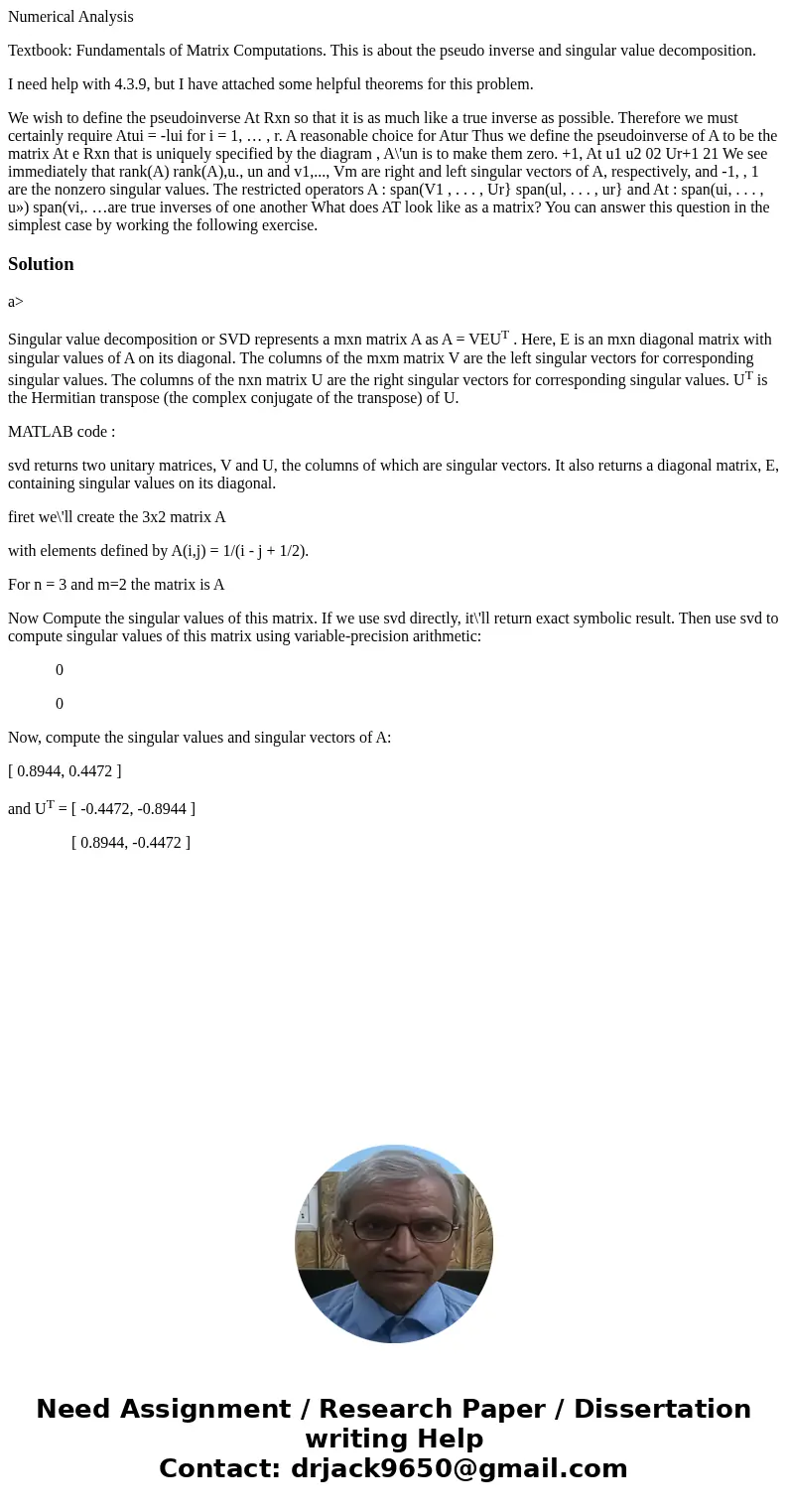Numerical Analysis Textbook Fundamentals of Matrix Computati
Numerical Analysis
Textbook: Fundamentals of Matrix Computations. This is about the pseudo inverse and singular value decomposition.
I need help with 4.3.9, but I have attached some helpful theorems for this problem.
We wish to define the pseudoinverse At Rxn so that it is as much like a true inverse as possible. Therefore we must certainly require Atui = -lui for i = 1, … , r. A reasonable choice for Atur Thus we define the pseudoinverse of A to be the matrix At e Rxn that is uniquely specified by the diagram , A\'un is to make them zero. +1, At u1 u2 02 Ur+1 21 We see immediately that rank(A) rank(A),u., un and v1,..., Vm are right and left singular vectors of A, respectively, and -1, , 1 are the nonzero singular values. The restricted operators A : span(V1 , . . . , Ur} span(ul, . . . , ur} and At : span(ui, . . . , u») span(vi,. …are true inverses of one another What does AT look like as a matrix? You can answer this question in the simplest case by working the following exercise.Solution
a>
Singular value decomposition or SVD represents a mxn matrix A as A = VEUT . Here, E is an mxn diagonal matrix with singular values of A on its diagonal. The columns of the mxm matrix V are the left singular vectors for corresponding singular values. The columns of the nxn matrix U are the right singular vectors for corresponding singular values. UT is the Hermitian transpose (the complex conjugate of the transpose) of U.
MATLAB code :
svd returns two unitary matrices, V and U, the columns of which are singular vectors. It also returns a diagonal matrix, E, containing singular values on its diagonal.
firet we\'ll create the 3x2 matrix A
with elements defined by A(i,j) = 1/(i - j + 1/2).
For n = 3 and m=2 the matrix is A
Now Compute the singular values of this matrix. If we use svd directly, it\'ll return exact symbolic result. Then use svd to compute singular values of this matrix using variable-precision arithmetic:
0
0
Now, compute the singular values and singular vectors of A:
[ 0.8944, 0.4472 ]
and UT = [ -0.4472, -0.8944 ]
[ 0.8944, -0.4472 ]

 Homework Sourse
Homework Sourse